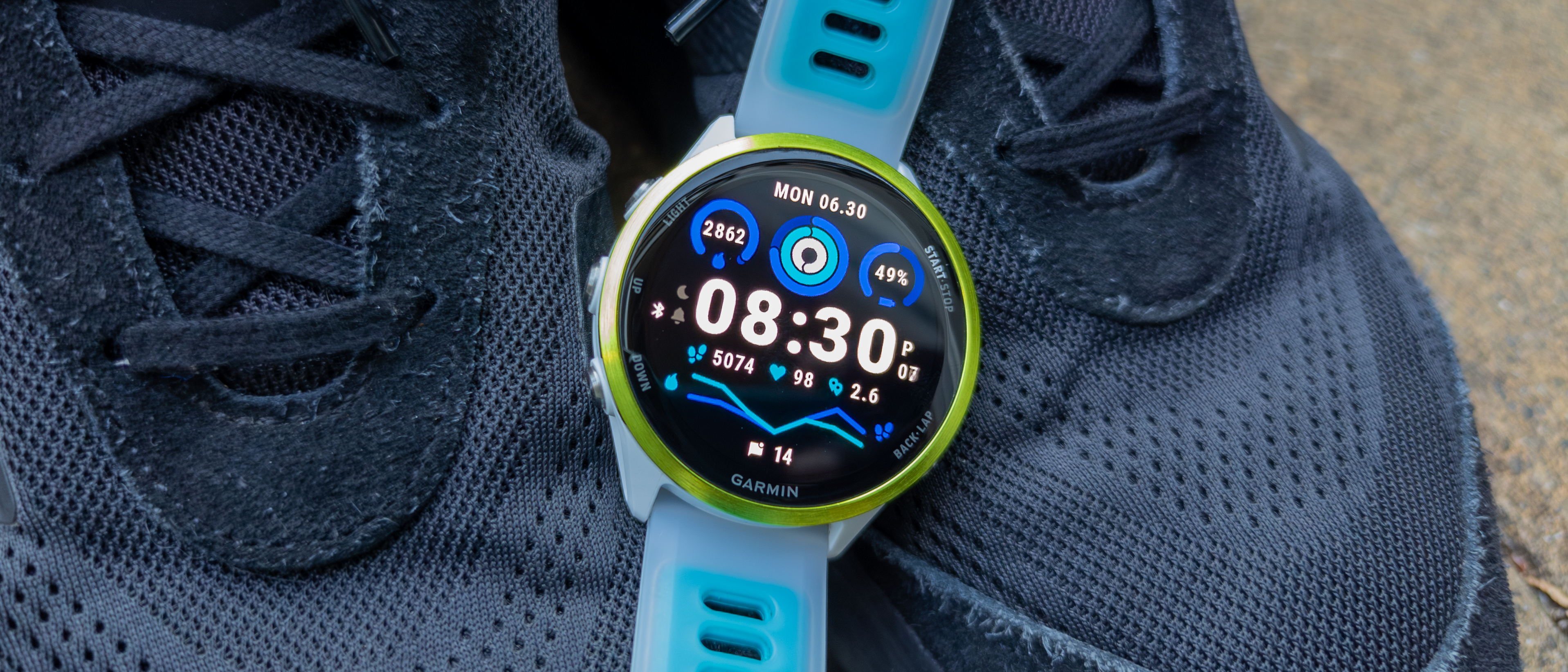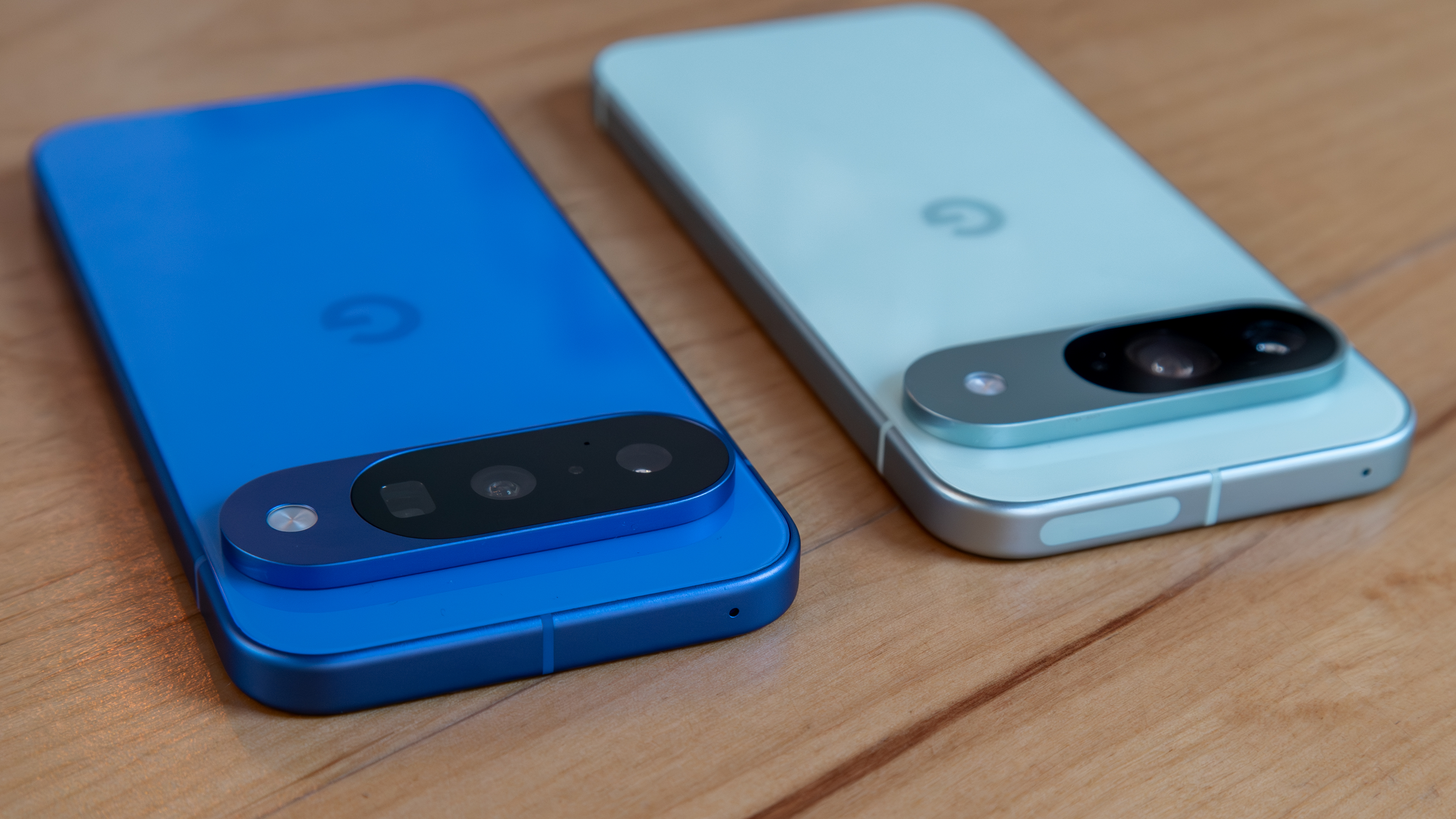Android Central Verdict
The Forerunner 570 attempts to deliver a flagship Garmin experience, almost achieving it thanks to its impressive Elevate sensor, bright display, and fun design. However, Garmin omits some features that keep this $550 watch from feeling truly worth its price tag.
Pros
- +
Big, bright display
- +
Tons of running and fitness features
- +
Standout design
- +
Mic and a fairly loud speaker
- +
Garmin's latest Elevate sensor
- +
11-day battery life
Cons
- -
Uncomfortable to wear to bed
- -
No ECG or offline maps
- -
Battery life falls behind other cheaper Garmin watches
- -
Expensive
Why you can trust Android Central
Now that I'm on a weight loss journey, cardio is becoming an increasingly important part of my life. That why I was excited to test the new Garmin Forerunner 570, despite my aversion to running. After all, this watch is just as its name suggests, "for runners," and a runner I am not. Still, after a month of testing, I came out mostly impressed with the 570.
This is a fantastic watch geared toward seasoned runners with a little extra cash to spend who don’t want to shell out $750 for the Forerunner 970. It includes nearly all the bells and whistles you'd expect from a Garmin watch of this caliber. However, Garmin makes some odd choices by omitting features one would expect to see on a watch of this price, which feels like an attempt to push users toward the better and more expensive model.
The result is a good-enough fitness watch that feels like the awkward middle child.
Garmin Forerunning 570: Price, availability, and specs
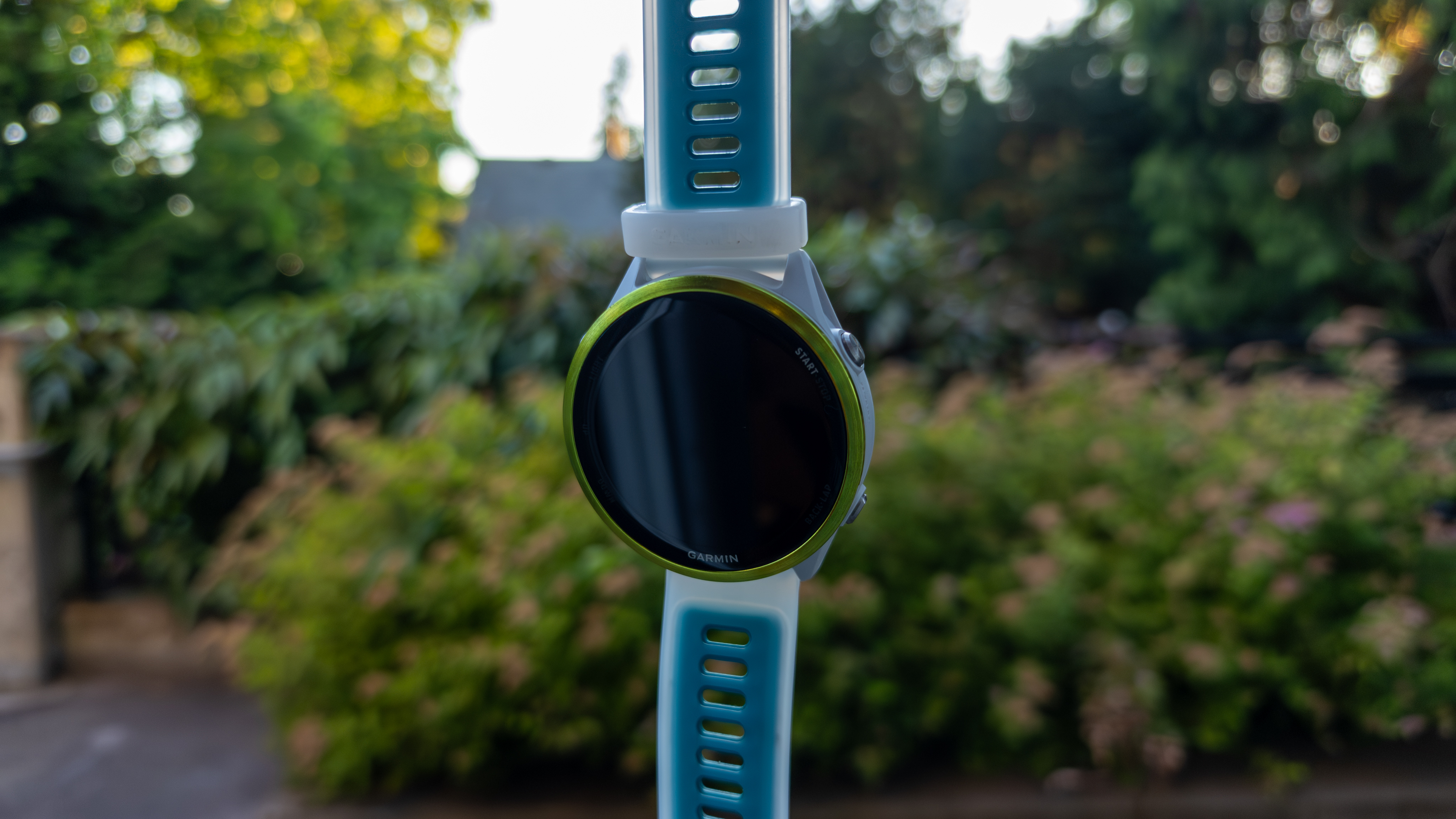
The Forerunner 570 was announced alongside the 970 in May 2025. The watch retails for $549 and is available in 42mm or 47mm case sizes.
There are five colorways or combinations to choose from across the two sizes, with three available in each size. Cloud Blue Aluminum/Cloud Blue band (42mm), Raspberry Aluminum/Mango band (42mm), Slate Grey/Translucent Black band (42/47mm), Amp Yellow/Turquoise band (47mm), and Indigo Aluminum/Indigo band (47mm).
Category | Forerunner 570 |
|---|---|
Size | 42mm: 42.4 x 42.4 x 12.9mm 47mm: 47 x 47 x 12.9mm |
Materials | Aluminum bezel, silicone strap |
Protection | Corning Gorilla Glass 3, 5 ATM |
Weight | 42mm: 42g 47mm: 50g |
Display | 42mm: 1.2" (390 x 390) 47mm: 1.4" (454 x 454) AMOLED |
Storage | 8GB |
Battery life | 42mm: 10 days (smartwatch mode), 18 hours (GPS-only GNSS mode) 47mm: 11 days (smartwatch mode), 18 hours (GPS-Only GNSS mode) |
Sensors | Elevate v5 HR, SpO2, accelerometer, altimeter, compass, gyroscope |
Tracking | GPS, GLONASS, GALILEO, SatIQ, multi-band GPS |
Connectivity | Bluetooth, ANT+, NFC |
LED flashlight | ❌ |
Garmin Forerunning 570: What I like
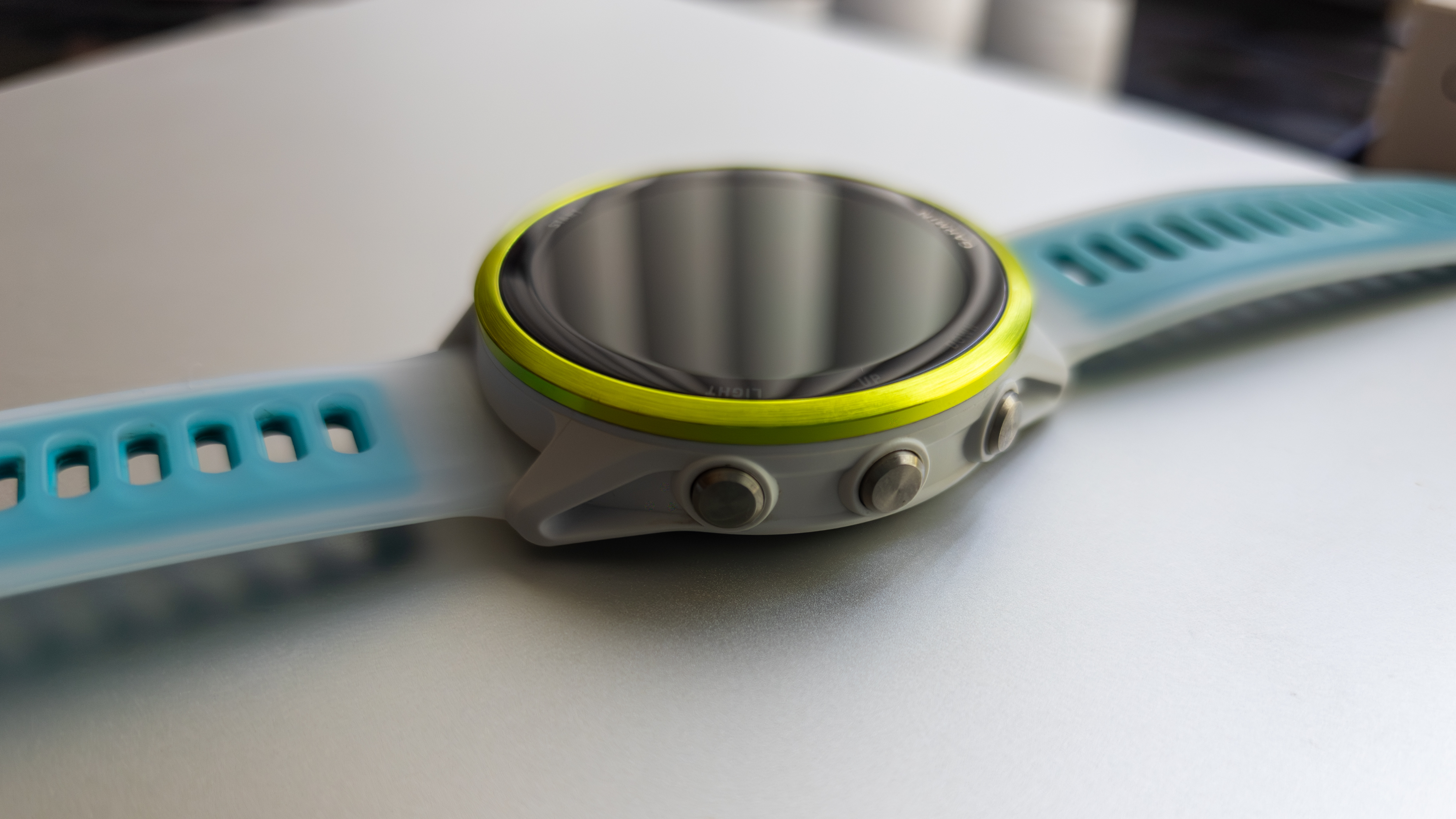
I really like some of the design choices Garmin has made here, particularly with the color options and band combinations. The Amp Yellow Aluminum model is a white watch with a neon yellow ring around the display. Match that with the translucent blue watch band, and you have a device that really stands out.
I’ve been told that it resembles a toy or a children's watch, which I don’t completely disagree with. However, I think the color adds a nice flair, even if it’s not necessarily something I would wear on a night out.
Get the latest news from Android Central, your trusted companion in the world of Android
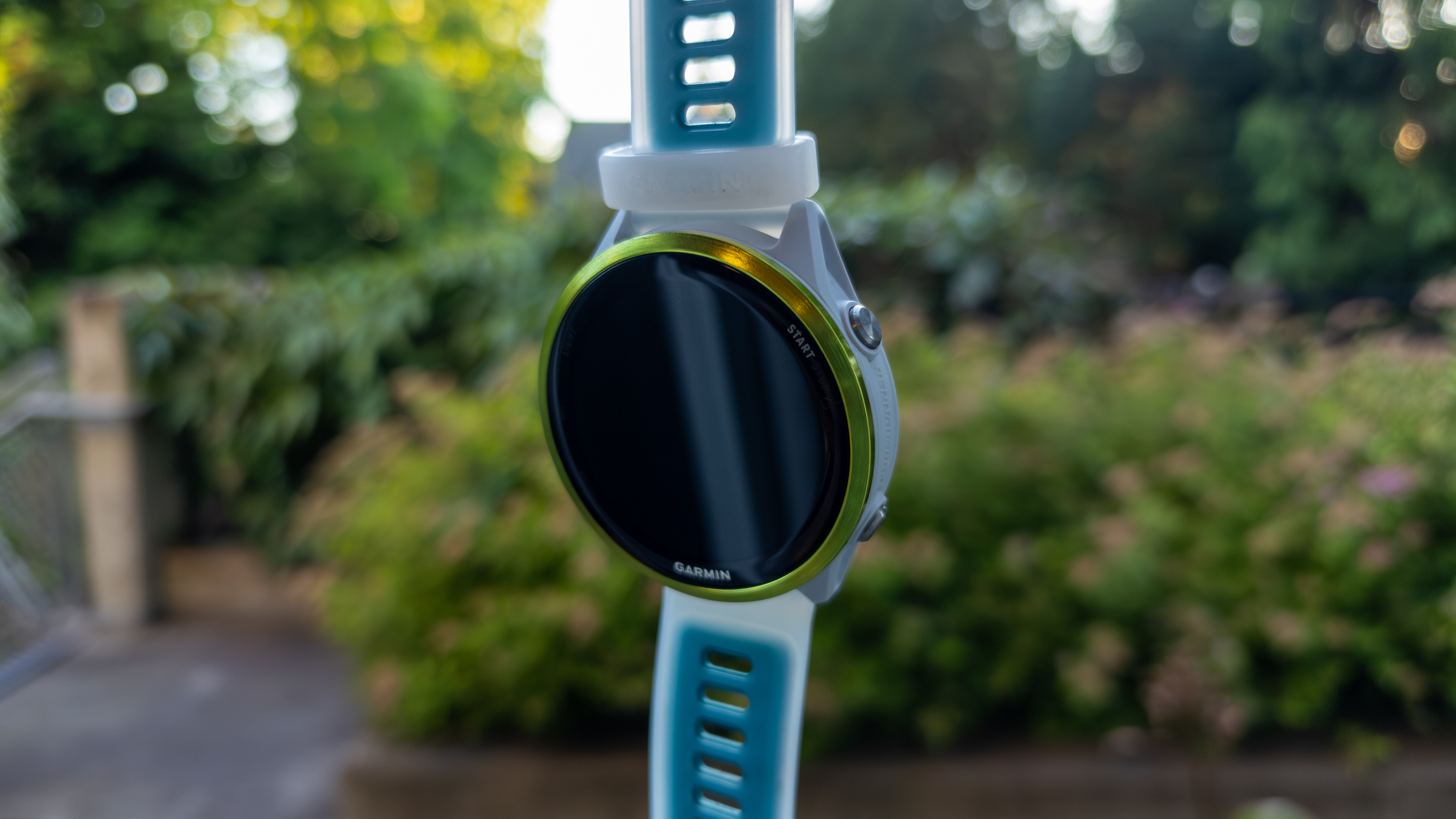
My unit is the 47mm version with the larger 1.4-inch display, and it looks gorgeous. It’s plenty bright, responsive, and fairly sharp. I have no trouble reading or navigating it while outside, which is partly helped by the rather colorful menus.
While I’m still not a huge fan of Garmin’s UI, the Forerunner 570 at least takes after newer Garmin models, offering quick access to notifications and Glance shortcuts The main menu also makes it easy to jump into a workout, with two prominent options at the top for Run and Activities, while the rest of the menu is customizable to your liking.
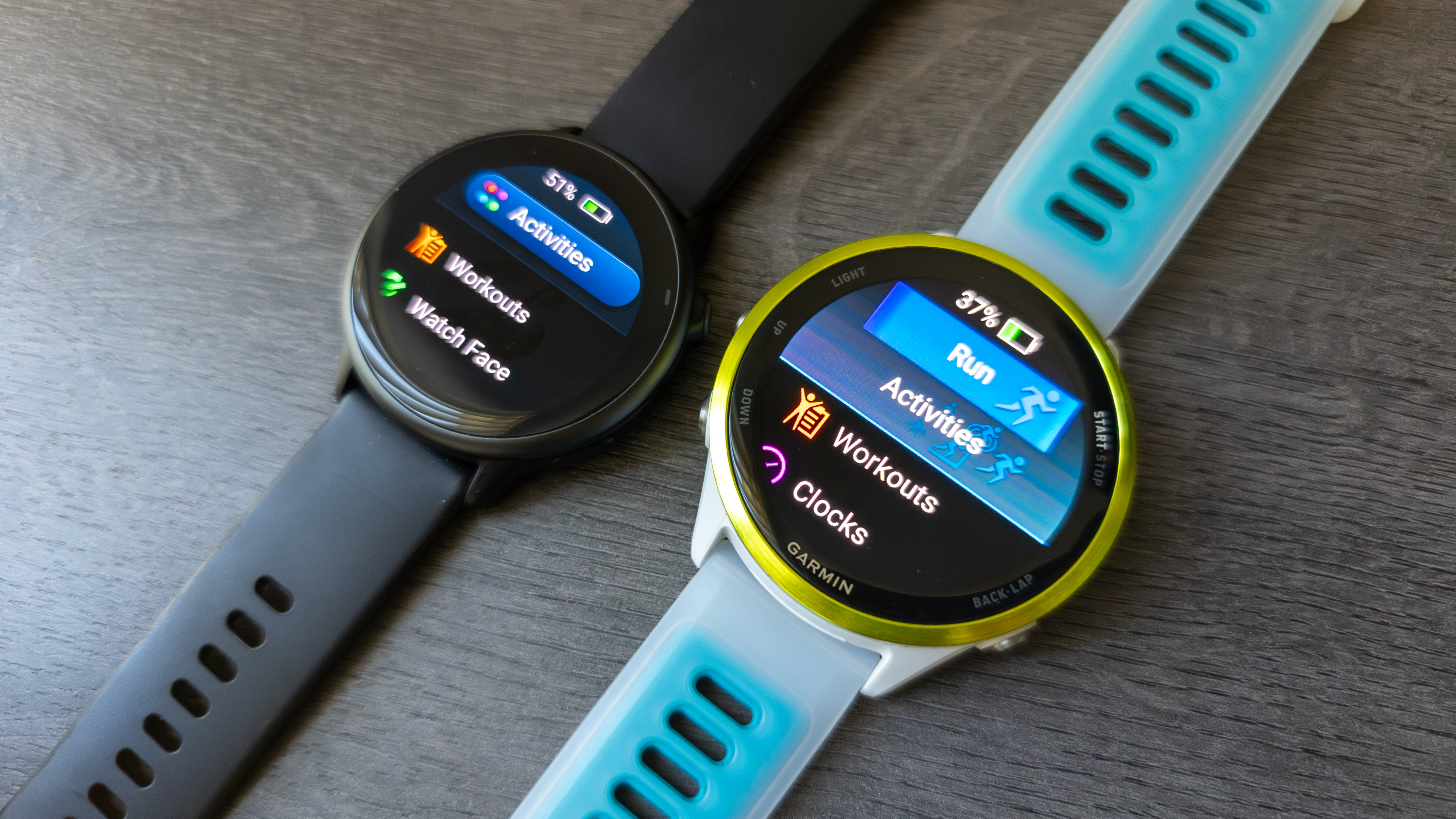
The Forerunner 570 comes with some nice-to-have smartwatch features, such as voice commands for quick access to workouts and other on-device functions, a speaker for music and calls, and the ability to trigger your phone's voice assistant.
The Forerunner 570 also comes with Morning Report, a feature I really like because, like on the Pixel Watch or Samsung phones, it provides you with a snapshot of what your day may look like, from the weather to any suggested workouts. It’s also much more useful than the Morning Report on the Vivoactive 6, as it suggests actual workouts, whether it's running or strength training, based on your coaching plan settings.
The Forerunner takes this a step further with an Evening Report. This is a recap of how your day went, including the workouts you did and what it will likely suggest for you the next day. This helps me mentally prepare for what I have in store, which I definitely needed with how hard this watch decided to push me during testing.
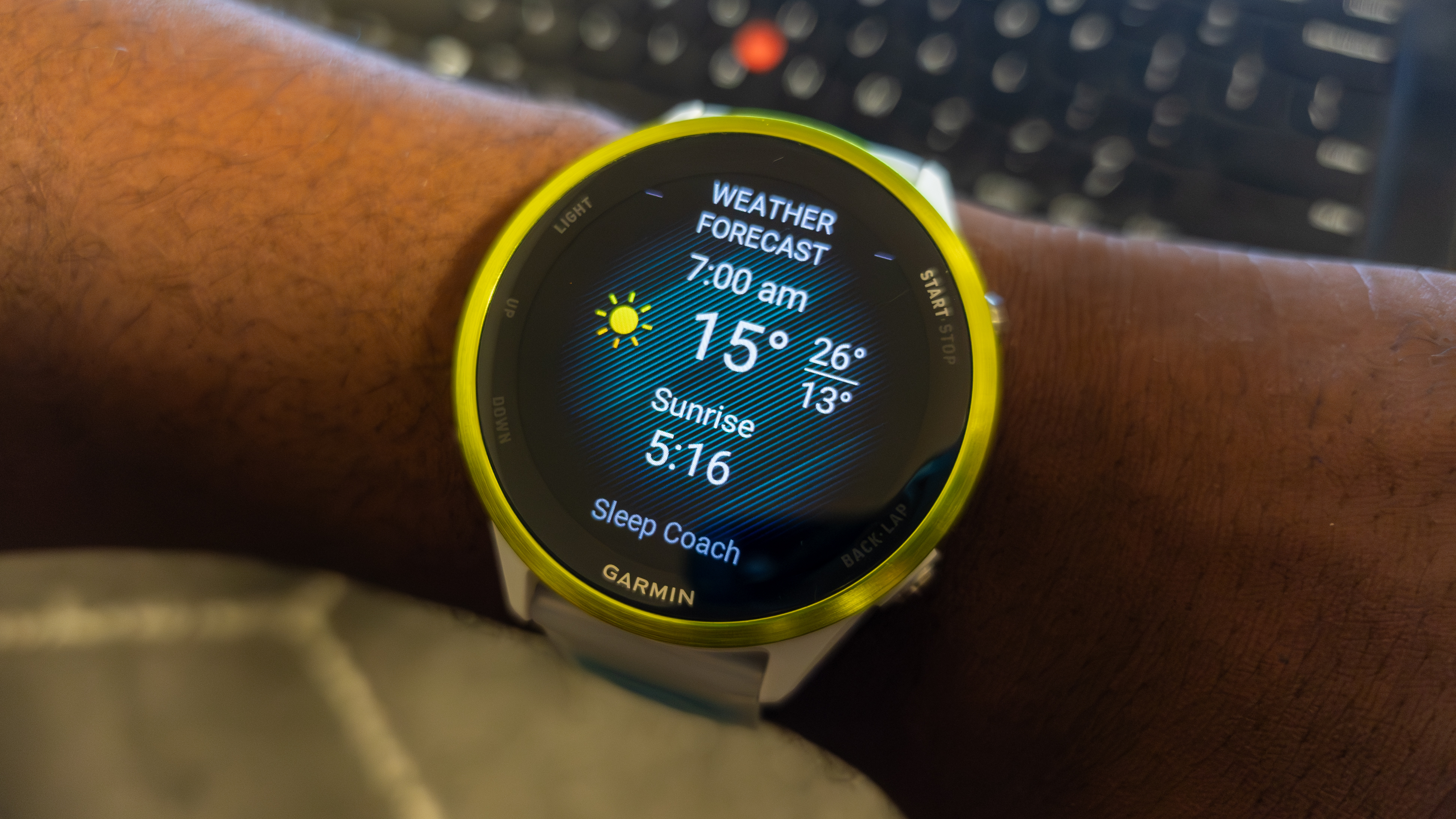
You won’t get crazy long battery life from the Forerunner 570, but up to 11 days in smartwatch mode is still better than you’ll get with a Wear OS smartwatch. In my experience, I would typically get up to a week or 8 days, usually while tracking one or two workouts a day, 6 days a week, with the display set to gesture activation.
Garmin Forerunner 570: Health and fitness
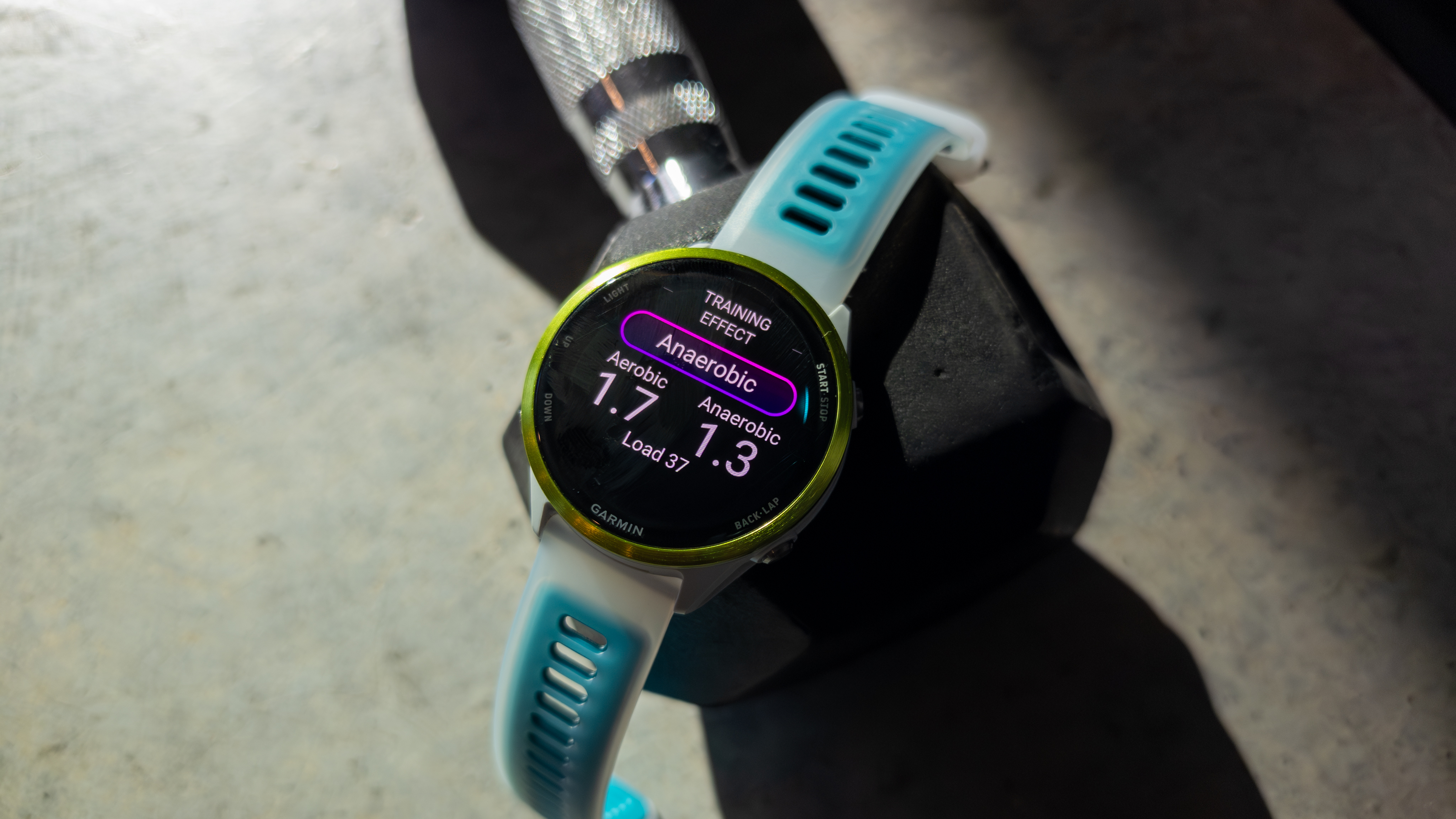
The Forerunner 570 utilizes Garmin’s Elevate Gen 5 HR sensor, the same one found on the Venu 3. The result is pretty accurate readings, at least from what I can tell without a chest or arm band to compare it to, although it's not perfect.
While doing workouts, I would sometimes notice that the watch seemed a little slow to catch up with my increased heart rate, as shown in the first heart rate chart below; however, this didn’t happen very often. At times, I find that I have to adjust the band on my wrist during a workout, and the heart rate readings will correct themselves. However, this is a general limitation of smartwatches, not one exclusive to Garmin.
In fact, when wearing the Forerunner 570 with the Venu 3, the watches seemed to be almost in sync with my heart rate readings during runs or HIIT sessions. The same can be said for the Pixel Watch 3, with the two hitting similar HR averages and maxes on multiple workouts.
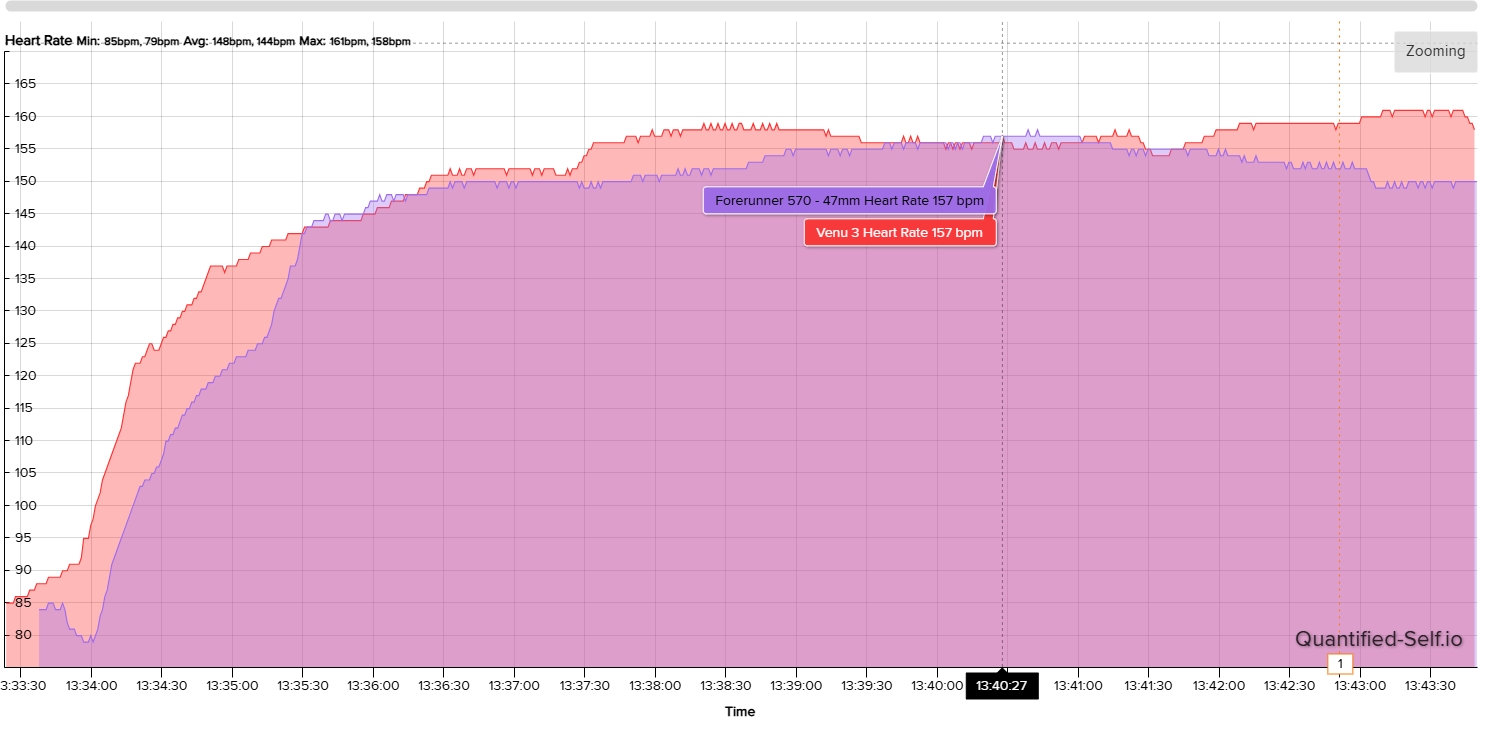


The step counter is also pretty accurate, although the results of my two step tests weren’t as impressive as the Forerunner 970 fitness test performed by Android Central’s Michael Hicks. For these tests, I walked 5,000 steps, and the Forerunner 570 was off only by around 40 steps both times.
Device | Test 1 | Test 2 |
|---|---|---|
Forerunner 570 | 4,966 | 4,958 |
Venu 3 | 4,996 | -- |
Pixel Watch 3 | -- | 4,961 |
Oura Ring 4 | 5,052 | 5,124 |
The Garmin Run Coach remains a helpful feature for anyone preparing for a race or simply looking to improve their fitness. I appreciate that you don’t need the Connect Plus subscription to use this, although additional guidance features are available with it.
However, as a new runner trying to incorporate more cardio into my routine, I found that I had trouble actually keeping up with the Fitness Plan. I consistently fell below the recommended pace during Base and Threshold runs, which suggested running sessions longer than I’m comfortable with. It definitely feels as though it’s tailored more to seasoned runners, which I am definitely not.
That said, there are plenty of useful features for runners that allow you to do things like race against your past runs and track your predicted race time based on your running performance. Additionally, numerous health and fitness metrics are available, including VO2 Max, Training Load Ratio, and HRV.
Oddly, despite having the same Elevate sensor as the older and cheaper Venu 3 and the newer Forerunner 970, you won't find ECG here.

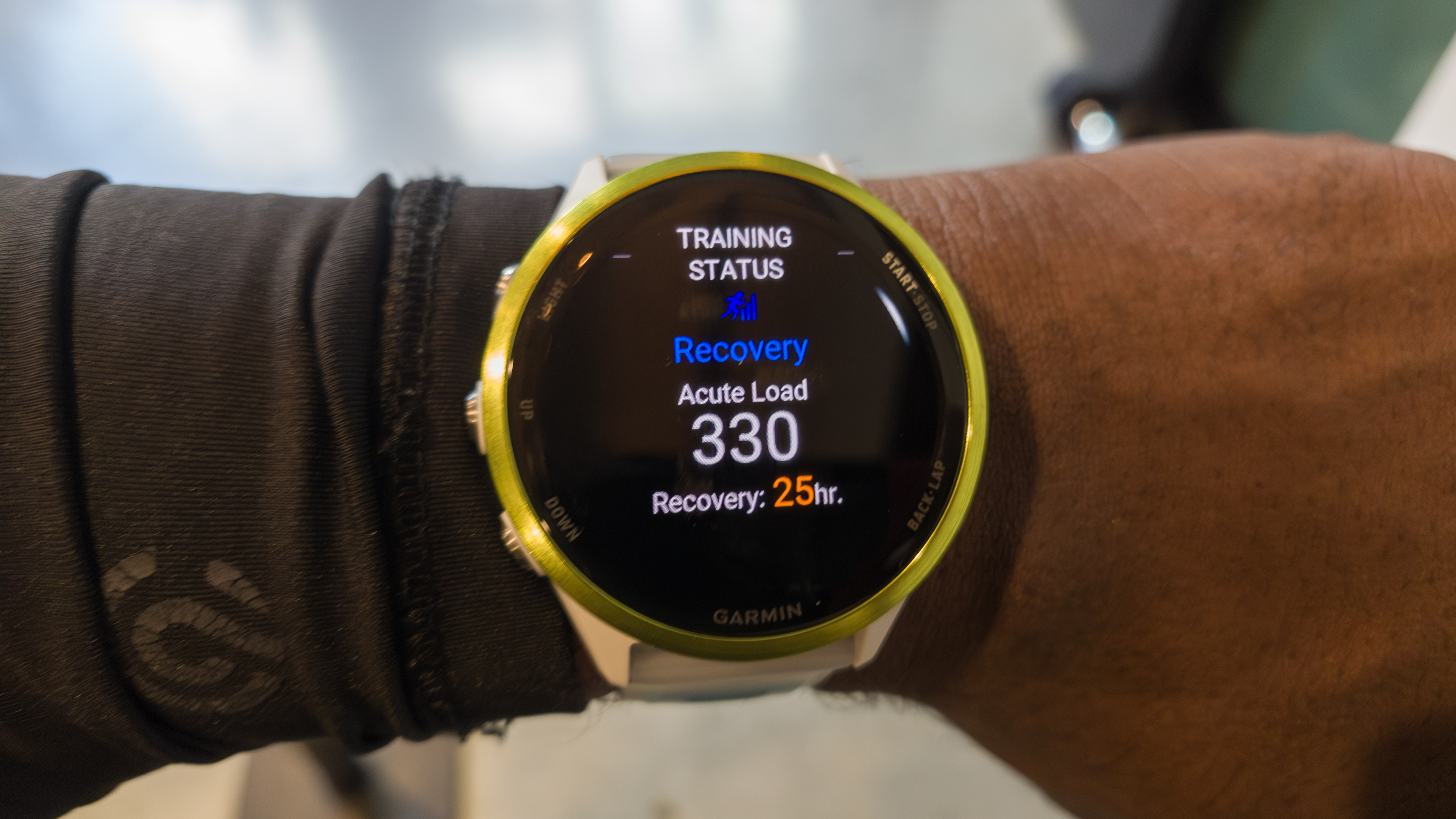
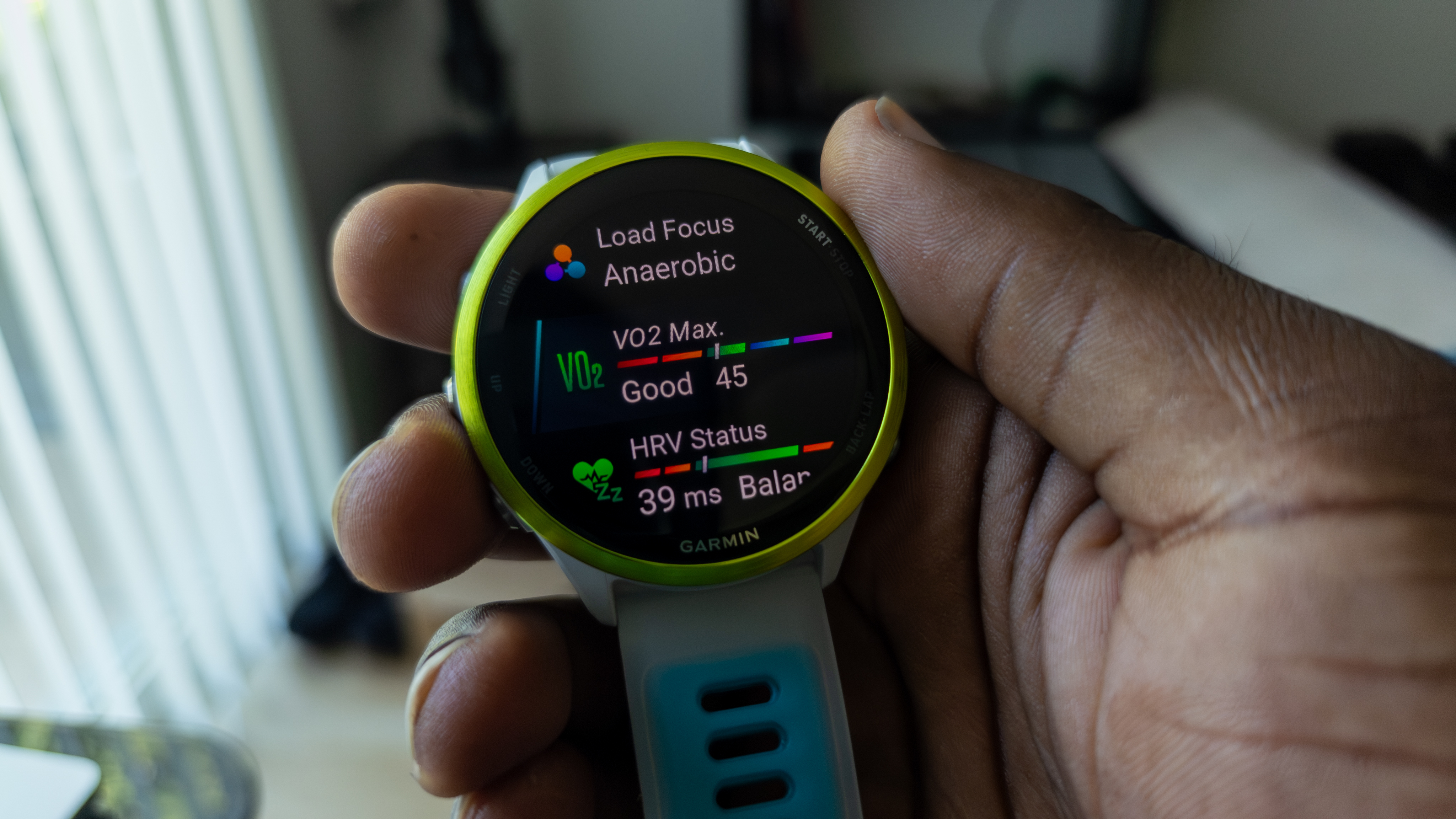
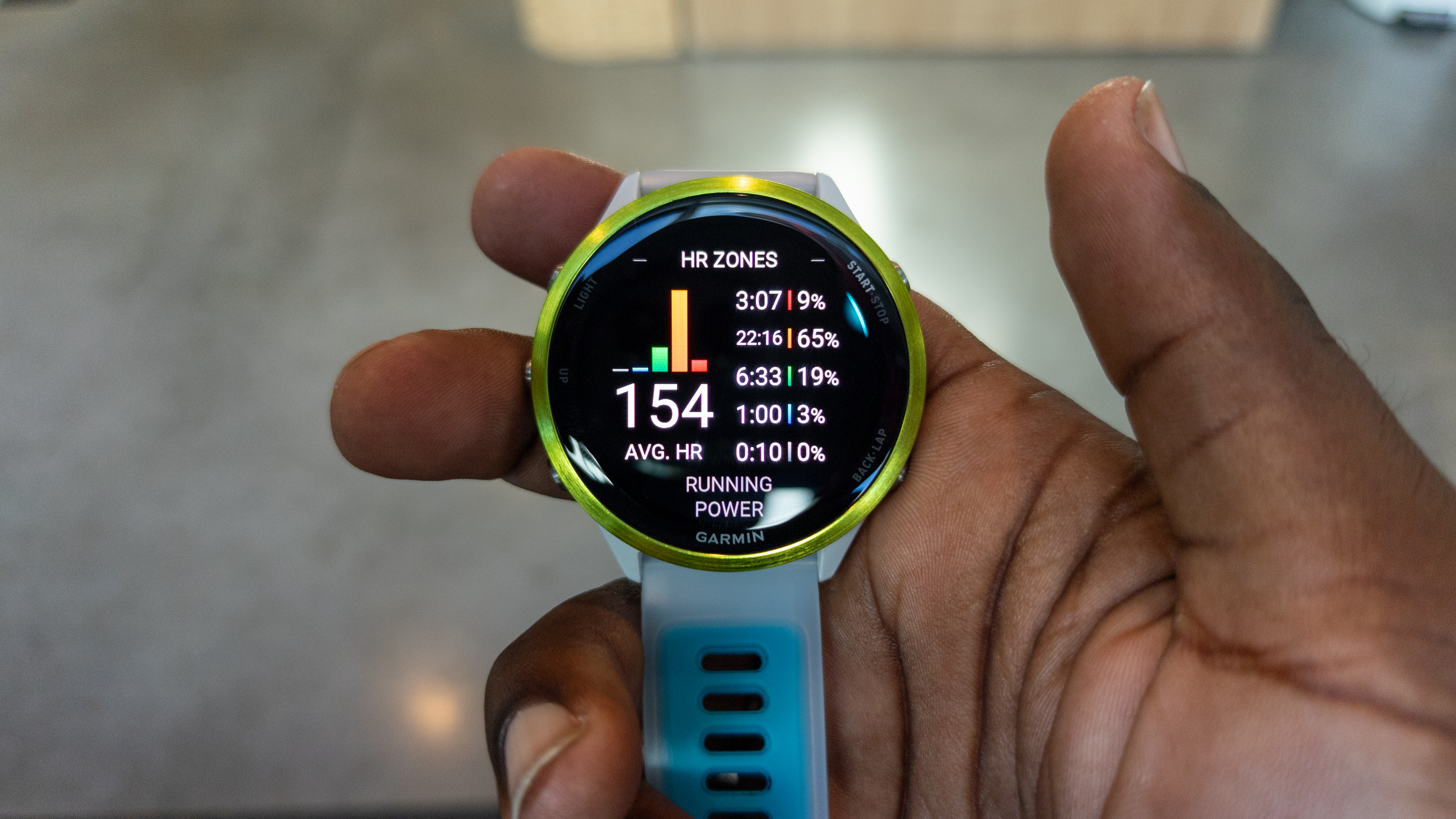
Fortunately, if you’re like me and are accustomed to weightlifting, you can incorporate Strength Coaching into your fitness plan; it will suggest workouts that complement your runs. The watch is also quite good at counting reps, auto-detecting sets, and identifying the muscle groups you've worked out.
Sleep tracking isn’t as robust as I’d like, even with the added temperature sensor. Additionally, more advanced sleep insights are hidden behind the Connect Plus Plan, so it doesn't feel quite as helpful. However, the Sleep Coach recommendations aren't paywalled, which is nice.
You also won’t enjoy wearing the watch to sleep, especially if you have the larger 47mm model. At 50g, it’s just uncomfortable and provides a good reason to rely on another device like the Oura Ring, or — if you want to stay within the Garmin family — the new Garmin Index sleep strap (which feels deliberate).
Garmin Forerunner 570: What I don't like
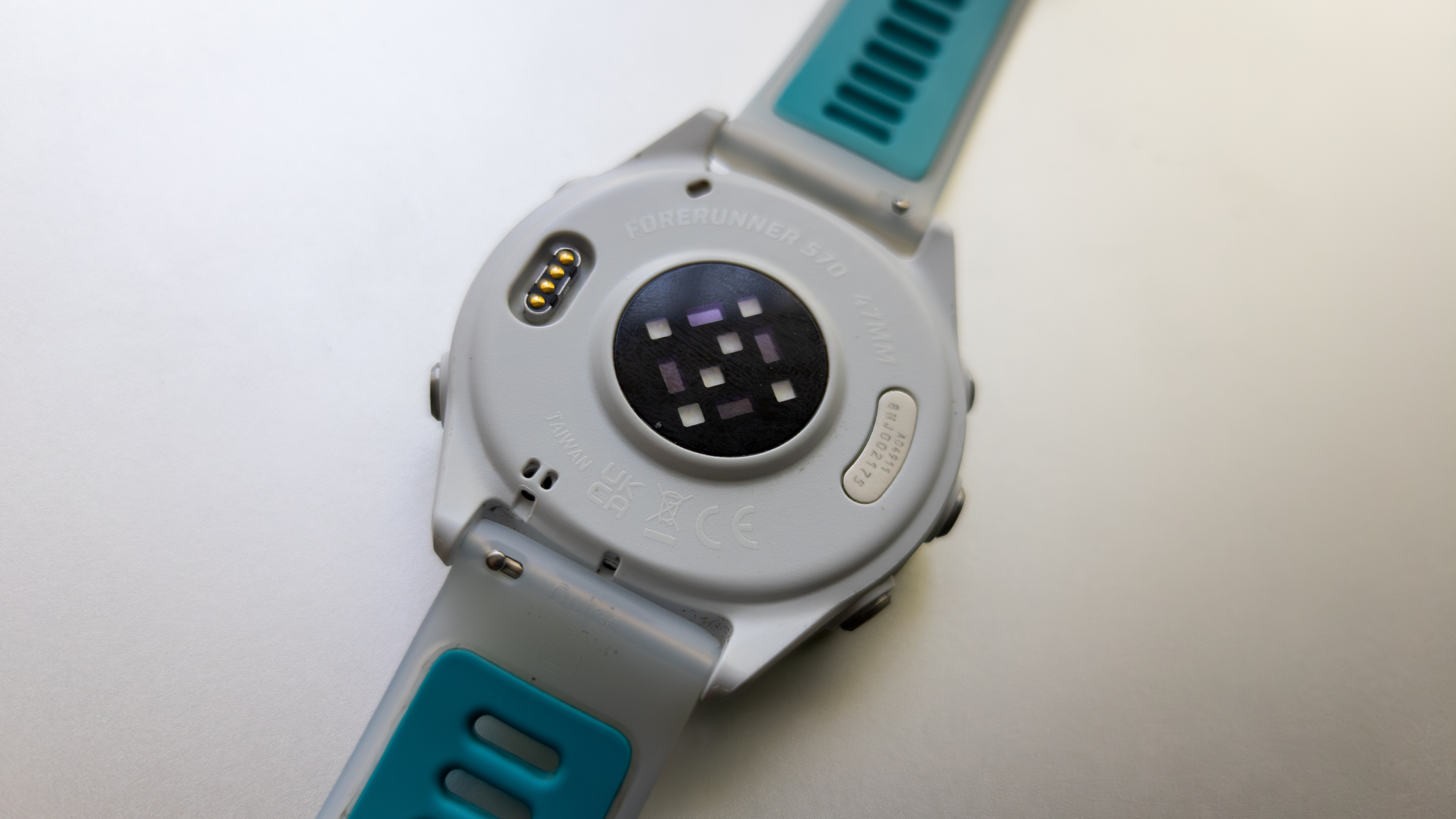
Because this is a Garmin, there are still particular quirks that you have to live with if you're not accustomed to these watches. For one, the way notifications are handled is pretty annoying. I could be in the middle of a workout, and if I receive a notification, it will linger on the display for longer than necessary. It will partially block the view of my workout screen until I swipe it away, which can be inconvenient when in the middle of a run.
In fact, notifications can be quite annoying because you can’t adjust the vibration intensity, despite the watch’s haptics being quite pleasant and subtle. Thus, I’ve had to turn off most notifications completely.
The watch seems to have trouble maintaining a connection to my phone, even if they’re right next to each other. Multiple times a day, I would receive notifications that it had been disconnected, only for it to reconnect about 10 seconds later. This is a behavior I haven't experienced on the Vivoactive 6 or Venu 3, so I’m not quite sure what that’s about.
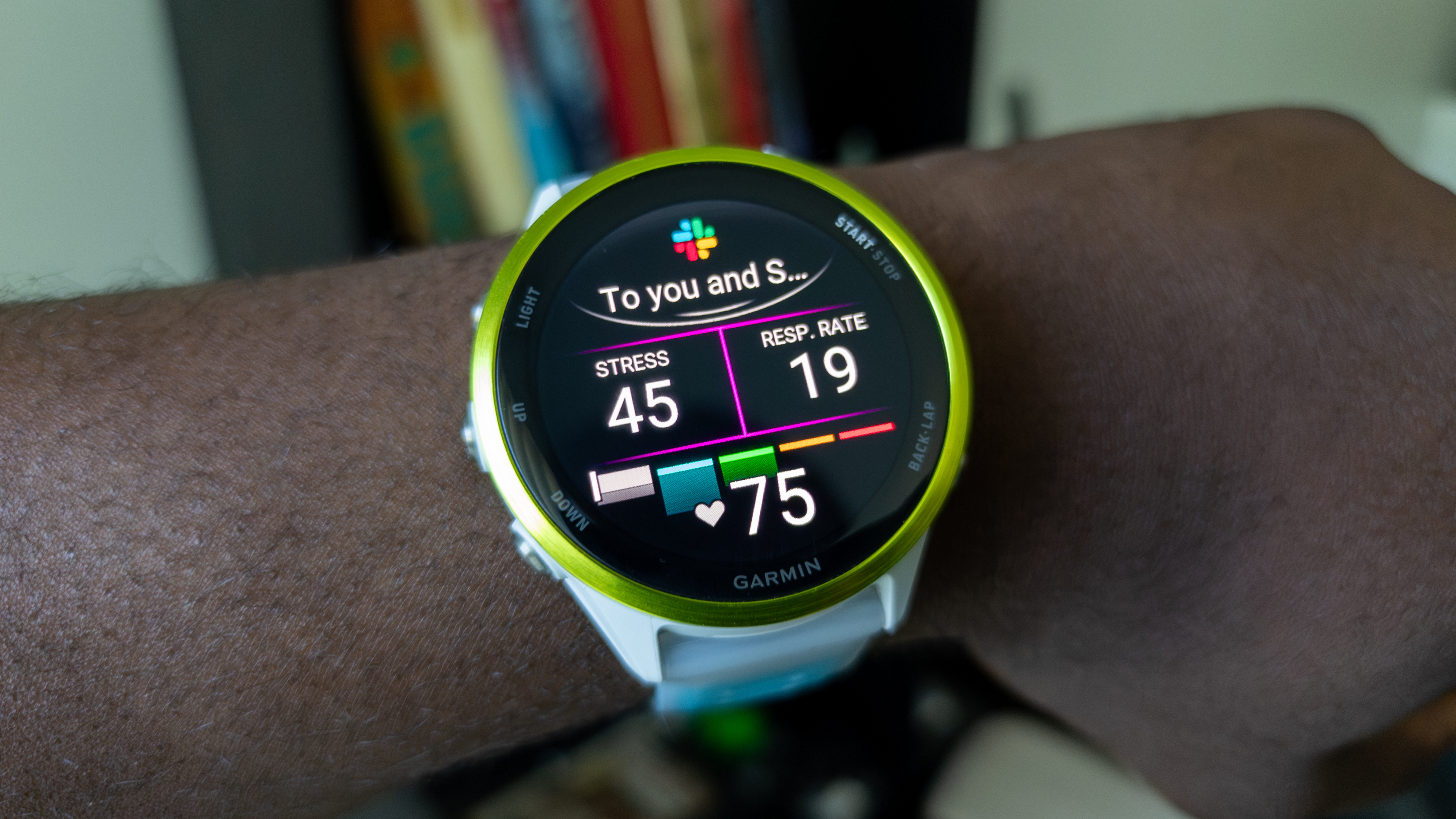
GPS tracking is as good as you'd expect on a Garmin watch of this caliber, but users may not like that the watch doesn’t support offline maps, which could be a dealbreaker for more outdoorsy types who enjoy going on hikes. It’s a strange omission for a $550 watch, one that pushes potential buyers to opt for the more expensive Forerunner 970.
You also don’t get a built-in LED flashlight, so the Light button just illuminates the display to varying levels of brightness when double pressed. It’s not particularly bright, so it’s not as helpful if you like to run at night.

I remain impressed with the battery life, but if you’re coming from other Garmin models, you’ll notice that the 570 has shorter battery life. Furthermore, the 11-day estimate matches that of the Forerunner 165, which costs $300 less, and feels like an unnecessary downgrade at the expense of the more expensive Forerunner 970.
Garmin Forerunner 570: Competition

The COROS Pace Pro features a similarly sized AMOLED display but offers longer battery life in certain usage patterns, offers offline maps, and is marketed as a more affordable mid-range option for runners. However, that lower price means cheaper materials, no NFC for payments, and no music apps.
Then there’s the Polar Vantage M3, which costs a bit more but also has a great display, workout suggestions, and impressive GPS and HR accuracy. On the other hand, you don’t get music storage, and the software experience may leave much to be desired.
Finally, you can opt for Wear OS watches like the Pixel Watch 3 or Galaxy Watch 7, which are easier to use, offer access to numerous apps, and support LTE connectivity. Unfortunately, battery life is quite lacking, and runners may miss the kinds of features you’ll find on a Garmin.
Garmin Forerunner 570: Should you buy it?
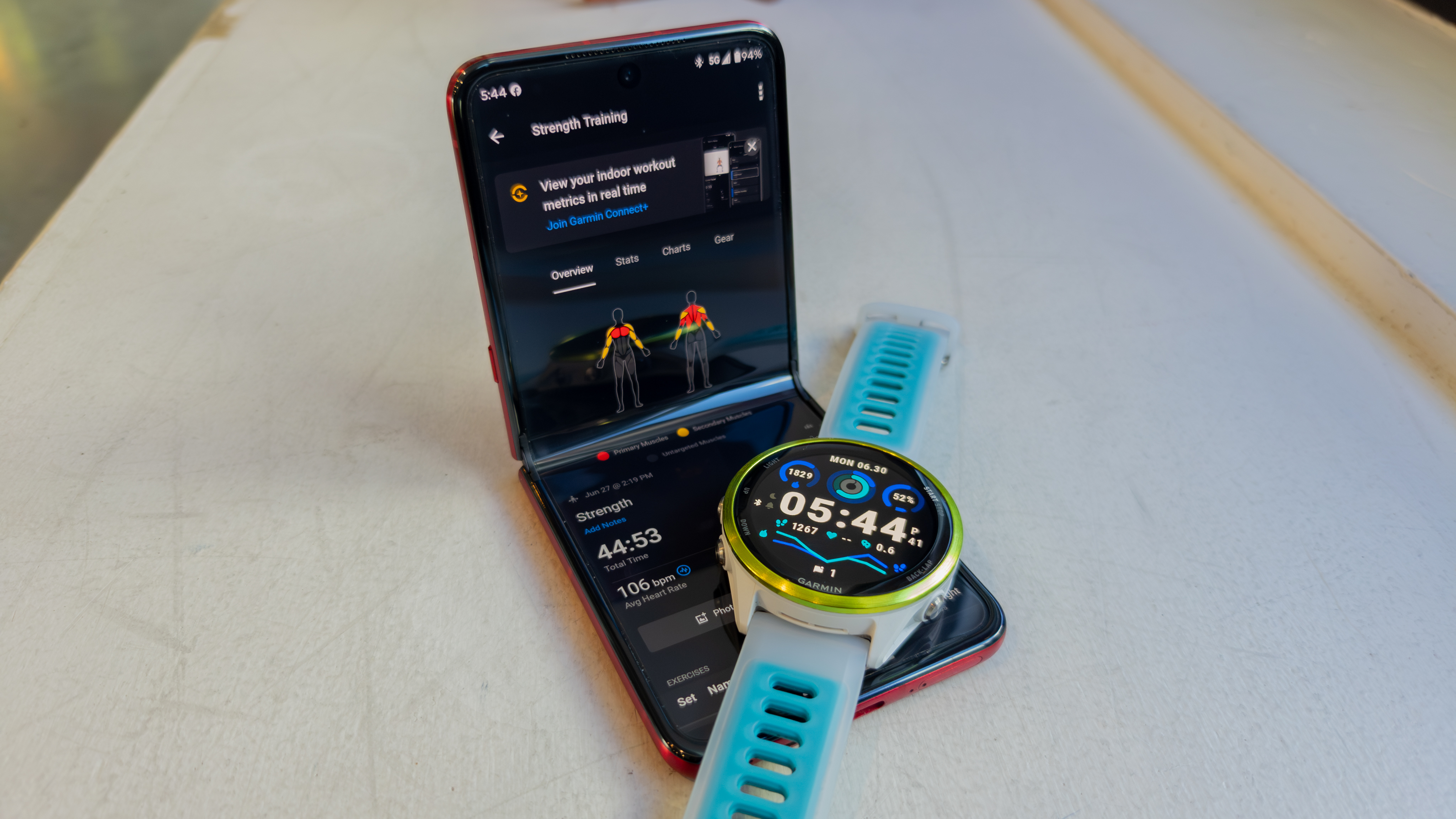
You should buy this if...
- You're an avid runner.
- You want a Forerunner 970 without the price tag.
- You want a good fitness watch.
You shouldn't buy this if...
- You like to hike and need offline maps.
- ECGs are a must-have.
- You're a new runner.
There's a lot to like about the Garmin Forerunner 570, especially if you're an avid runner. The watch looks good, performs well, and offers a range of features designed to help runners enhance their performance. It also has most of what Garmin users would expect from a watch at this price.
However, it feels like the Forerunner 570 sits in an awkward space between the cheaper Forerunner 265 and pricier 970, with Garmin saving features that the 570 should have gotten for its top-of-the-line model. I can see why this would be a dealbreaker for some and make them second-guess buying this over the other two models.
As a new runner, I feel like this watch is well above my capabilities, not to mention my pay grade. It's not a cheap smartwatch, and even if you can afford it, it's definitely not for everyone. You might be better off getting the aforementioned Forerunner models or even the older Venu 3, depending on your budget and needs.
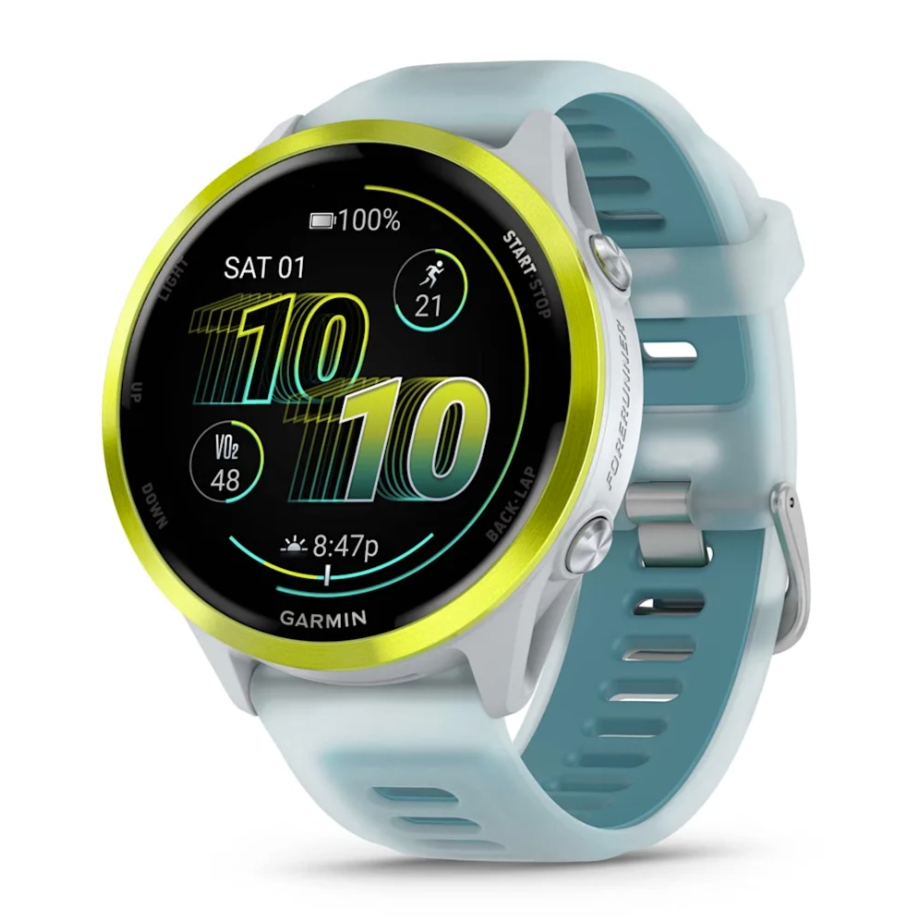
For runners
The Forerunner 570 is an impressive running watch with a standout design, a large AMOLED display, and plenty of fitness features.

Derrek is the managing editor of Android Central, helping to guide the site's editorial content and direction to reach and resonate with readers, old and new, who are just as passionate about tech as we are. He's been obsessed with mobile technology since he was 12, when he discovered the Nokia N90, and his love of flip phones and new form factors continues to this day. As a fitness enthusiast, he has always been curious about the intersection of tech and fitness. When he's not working, he's probably working out.
You must confirm your public display name before commenting
Please logout and then login again, you will then be prompted to enter your display name.
